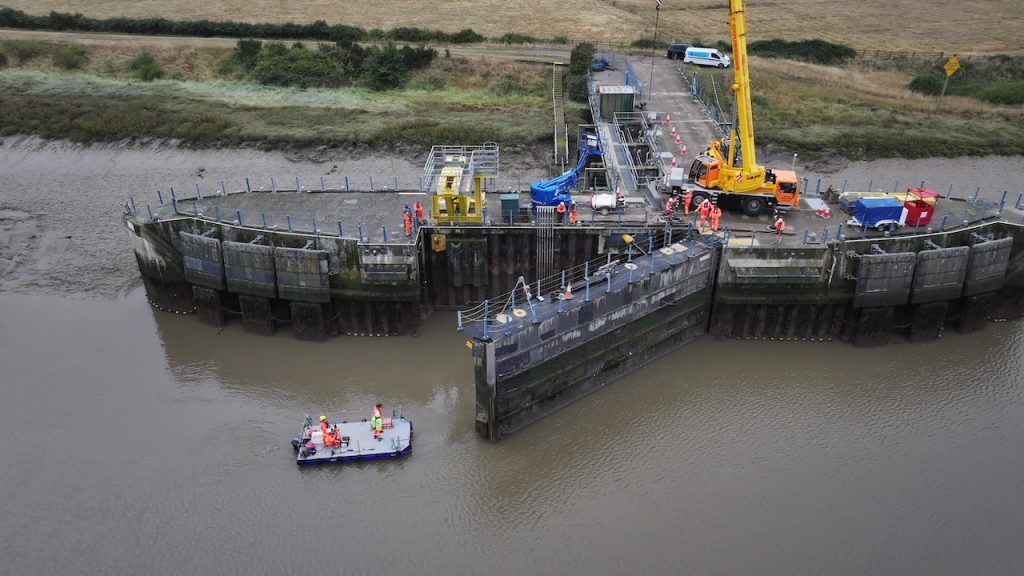Coating defects can lead to operational hazards and significant financial losses. The harsh environment and strenuous operations of the oil and gas industry make it particularly susceptible to coating failures.
In the oil and gas industry, 25% of safety incidents are caused by corrosion-related failures. Identifying and preventing coating defects is vital to reduce their severe impact on oil and gas.
Common Causes of Coating Defects in Oil & Gas
Chemical Exposure
Chemicals present in oil and gas production lead to corrosion which can cause serious damage. Corrosion breaks down protective layers of the coating which can lead to leaks.
The acidic gases in oil reservoir brine are a major cause of corrosion. Oxygen-related corrosion occurs in water injection systems and some metal components. Such issues severely impact oil and gas operations by compromising well integrity and reducing production rates.
Harsh Conditions
Pipelines and rigs are exposed to harsh weather conditions, temperature fluctuations, moisture, humidity, UV, salt water, and more. Over time, this speeds up wear and causes coating defects.
For instance, high temperatures cause coatings to expand which can lead to brittleness and cracking. On the other hand, extreme cold causes coatings to contract which may result in fissures. These issues may become evident for pipelines, for instance, that run through a range of terrains.
Operational Stress
Naturally, coatings in the oil and gas industries are exposed to ongoing operations making them susceptible to damage. Mechanical damage such as abrasions lessen the efficacy of coatings.
Coatings can easily become dented or scratched by debris or tools in this environment which exposes the metal underneath the coating. Pipes and other structural components further face mechanical stress due to vibrations and movements which can lead to coatings cracking or peeling.
Wear and Tear
Materials degrade over time. It’s essential that problems such as these are identified and addressed early to extend the lifespan and functionality of a coating.
Through natural degradation, coatings may, for example, develop small cracks or lose their elasticity. As a result, the protective barrier weakens significantly and can become further damaged over time if the issue isn’t mitigated.
Poor Application
One of the leading causes of coating defects is improper application in the early stages. Advanced quality control is required to ensure the coating will endure.
For instance, before applying the coating, the surface must be properly cleaned and prepared. Otherwise, the coating might not adhere correctly which can lead to premature coating failure. Contaminants such as oil, dirt, or rust may also be present and impact the efficacy of the coating.
How to Identify and Prevent Coating Defects
Search for Physical Evidence
Premature coating failure may manifest in different ways over time. Here are some signs that indicate the presence of a coating defect:
- Blistering – Raised bubbles or blisters on the surface caused by trapped moisture, gas, or contaminants beneath the coating.
- Cracking – Visible splits or fractures in the coating often due to stress, ageing, or improper application.
- Peeling or Flaking – Sections of the coating separate from the substrate often due to poor adhesion or surface preparation.
- Discolouration – Changes in the coating colour, which may indicate UV degradation, chemical exposure, or contamination.
- Pinholes or Pores – Tiny holes or voids in the coating often due to improper application or curing.
- Delamination – Layers of the coating separating from each other or the substrate usually due to adhesion failure.
- Erosion or Abrasion – Visible wear or thinning of the coating is often caused by mechanical damage or environmental exposure.
Perform Advanced Testing
Advanced testing in the form of a coating failure analysis establishes the precise root causes of coating defects. This way you can remedy the issue before it worsens and apply preventative measures for the future. Some examples of the advanced testing methods used by coating inspectors include:
- Adhesion Testing – Assesses the strength of the bond between the coating and substrate, e.g. a pull-off adhesion test.
- Thickness Testing – Establishes if the coating’s thickness meets specifications, e.g. using a digital thickness gauge.
- Chemical Analysis – Identifies the chemical composition of the coating and the presence of contaminants, e.g. using laboratory testing.
- Environmental Exposure Tests – Simulates the environmental effects on the coating, e.g. salt spray test.
- Microscopic Analysis – Closely examines the surface morphology, defects, and interface quality, e.g. scanning electron microscopy (SEM).
Prevent Coating Failures with Expert Analysis
In the oil and gas industry, coating failures pose a serious risk from causing safety incidents to damaging equipment. Identifying common coating defects is crucial to prevent full-scale issues. This is achieved with expert analysis and advanced testing to extend the lifespan of coatings and reduce the risk of costly failures.
To book a professional coating analysis, contact our team of expert coating inspectors today.




